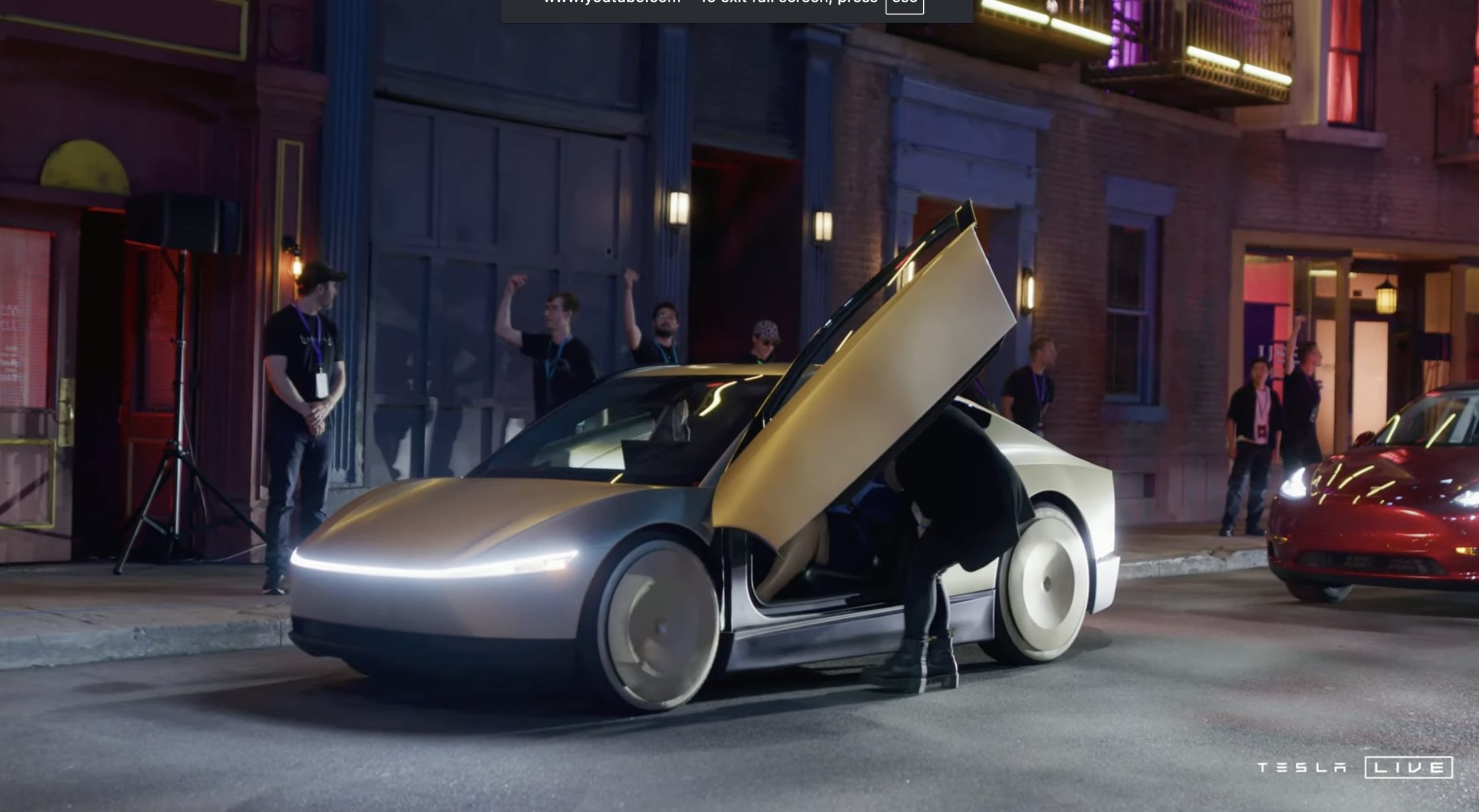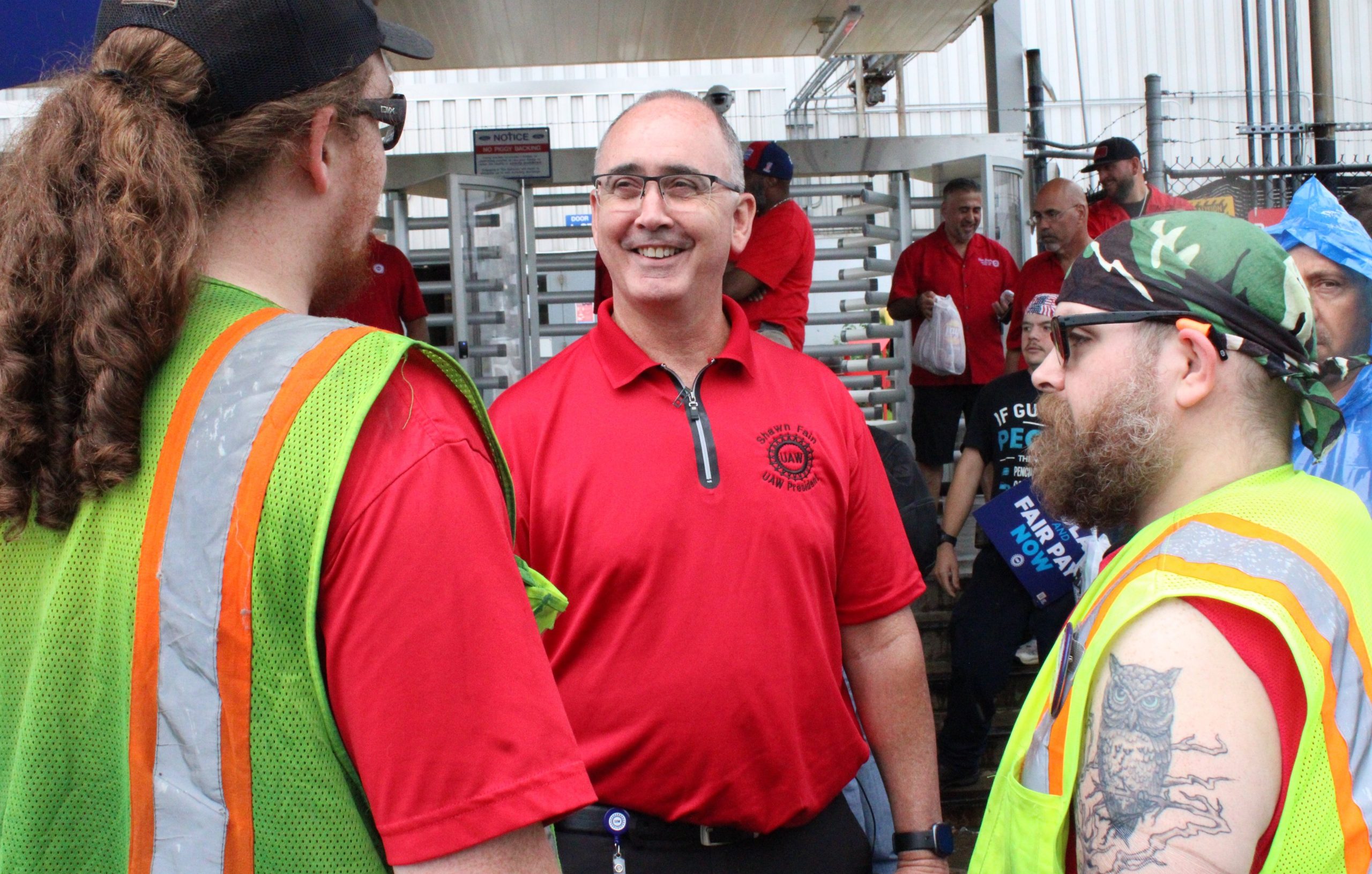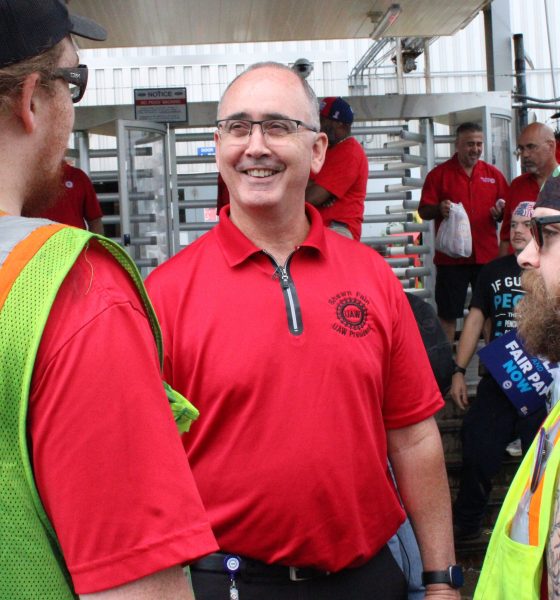Ford, General Motors (GM) and Stellantis face continued negotiations with the United Auto Workers (UAW) union after around 13,000 workers shut down three manufacturing plants when previous contracts expired on Thursday.
The shutdowns could be costly for the so-called “Big 3” automakers if union demands are not met. Some say electric vehicle (EV) market leader Tesla could be set to win big from the damage amidst the Big 3’s attempts to transition to EVs.
UAW workers shut down the Ford Michigan Assembly Plant’s Final Assembly and Paint facilities, as detailed in a Detroit Free Press report on Sunday morning. The strikes also shut down the Stellantis Toledo Assembly Complex in Ohio and GM’s Assembly plant in Wentzville, Missouri.
Following the walkouts, Ford CEO Jim Farley warned that the UAW’s demands could force bankruptcy, and the automaker also laid off 600 employees at its Michigan plant. GM says it plans to lay off around 2,000 workers at its Fairfax Assembly facility in Kansas City, Kansas this week due to an inability to get parts from the Wentzville plant, inevitably causing a production halt.
While the UAW initially proposed a 40-percent wage increase over four years, based on compensation increases the automakers’ CEOs have received, the union lowered its demands to a 36-percent increase last week.
Still, negotiations remain far off. Ford and GM most recently offered 20-percent wage increases over the period, while Stellantis offered 21 percent.
In addition to wage increases over the four-year period, the UAW is demanding the automakers restore cost-of-living allowances (COLA) lost in a 2007 union contract, which are expected to help stave off the effects of inflation.
Demands also include moving to a 32-hour work week while retaining the pay for a 40-hour work week, the restoration of defined benefit pensions, increased paid time off, limited use of temporary workers, and reducing the time it takes for employees to make top wages.
UAW President Shawn Fain has used the wage demands as a comparison between worker and CEO pay increases. The UAW initially created the 40-percent wage increase figure based on compensation increases for the automakers’ CEOs since 2019. According to Fain, workers have only gained 6-percent wage increases during that time.
According to a breakdown from AP News in a Sunday morning report, median worker pay in 2022 was highest at GM at $80,034. In the same year, median worker pay at Ford and Stellantis landed at $74,691 and 64,328 euros (~$68,660), respectively.
AP News also reports that GM CEO Mary Barra is the highest-paid of the three executives, with her 2022 compensation package paying out $28.98 million. Her pay has increased by roughly 34 percent since 2019, according to an analysis by Equilar from public data filings.
Following her was Farley, who was paid almost $21 million by Ford through his compensation package in 2022, marking a 25 percent jump from former CEO William Clay Ford’s pay in 2019.
Stellantis is a European company, so the way its executive pay is made public differs slightly from GM or Ford’s. CEO Carlos Tavares was paid roughly 23.46 million euros ($25.04 million) in 2022, according to the automaker’s annual remuneration report. However, this figure includes “realized pay,” detailing previously granted equity values that vested the same year as reports are made.
Instead of using this figure, Equilar utilized a similar “grant date” method to make the comparisons more accurate. By this method, Equilar found Tavares’ compensation to be roughly 21.95 million euros ($23.43 million) last year, marking a 24-percent drop from former CEO Mike Manley’s 2019 compensation package of 29.04 million euros ($31 million).
Many CEOs get most of their compensation from stock options or other non-salary payment methods.
In 2022, the biggest payout in Barra’s compensation package was $14.62 million in stock grants, vested over three years. During the same year, Farley received $15.14 million in stock awards, which have a similar three-year vesting period with the final value being tied to performance.
Negotiations between the automakers and the UAW are expected to continue this week.
Amidst the strikes, EV manufacturer Tesla is set to launch deliveries of its Cybertruck and Model 3 Highland, and the automaker is also initiating a $1.8 billion lease securitization to gain additional funding.
Tesla prepares for $1.8 billion lease securitization: report
What are your thoughts? Let me know at zach@teslarati.com, find me on X at @zacharyvisconti, or send your tips to us at tips@teslarati.com.

Elon Musk
Tesla CEO Elon Musk drops massive bomb about Cybercab
“And there is so much to this car that is not obvious on the surface,” Musk said.

Tesla CEO Elon Musk dropped a massive bomb about the Cybercab, which is the company’s fully autonomous ride-hailing vehicle that will enter production later this year.
The Cybercab was unveiled back in October 2024 at the company’s “We, Robot” event in Los Angeles, and is among the major catalysts for the company’s growth in the coming years. It is expected to push Tesla into a major growth phase, especially as the automaker is transitioning into more of an AI and Robotics company than anything else.
The Cybercab will enable completely autonomous ride-hailing for Tesla, and although its other vehicles will also be capable of this technology, the Cybercab is slightly different. It will have no steering wheel or pedals, and will allow two occupants to travel from Point A to Point B with zero responsibilities within the car.
Tesla shares epic 2025 recap video, confirms start of Cybercab production
Details on the Cybercab are pretty face value at this point: we know Tesla is enabling 1-2 passengers to ride in it at a time, and this strategy was based on statistics that show most ride-hailing trips have no more than two occupants. It will also have in-vehicle entertainment options accessible from the center touchscreen.
It will also have wireless charging capabilities, which were displayed at “We, Robot,” and there could be more features that will be highly beneficial to riders, offering a full-fledged autonomous experience.
Musk dropped a big hint that there is much more to the Cybercab than what we know, as a post on X said that “there is so much to this car that is not obvious on the surface.”
And there is so much to this car that is not obvious on the surface
— Elon Musk (@elonmusk) January 2, 2026
As the Cybercab is expected to enter production later this year, Tesla is surely going to include a handful of things they have not yet revealed to the public.
Musk seems to be indicating that some of the features will make it even more groundbreaking, and the idea is to enable a truly autonomous experience from start to finish for riders. Everything from climate control to emergency systems, and more, should be included with the car.
It seems more likely than not that Tesla will make the Cybercab its smartest vehicle so far, as if its current lineup is not already extremely intelligent, user-friendly, and intuitive.
Investor's Corner
Tesla Q4 delivery numbers are better than they initially look: analyst
The Deepwater Asset Management Managing Partner shared his thoughts in a post on his website.

Longtime Tesla analyst and Deepwater Asset Management Managing Partner Gene Munster has shared his insights on Tesla’s Q4 2025 deliveries. As per the analyst, Tesla’s numbers are actually better than they first appear.
Munster shared his thoughts in a post on his website.
Normalized December Deliveries
Munster noted that Tesla delivered 418k vehicles in the fourth quarter of 2025, slightly below Street expectations of 420k but above the whisper number of 415k. Tesla’s reported 16% year-over-year decline, compared to +7% in September, is largely distorted by the timing of the tax credit expiration, which pulled forward demand.
“Taking a step back, we believe September deliveries pulled forward approximately 55k units that would have otherwise occurred in December or March. For simplicity, we assume the entire pull-forward impacted the December quarter. Under this assumption, September growth would have been down ~5% absent the 55k pull-forward, a Deepwater estimate tied to the credit’s expiration.
“For December deliveries to have declined ~5% year over year would imply total deliveries of roughly 470k. Subtracting the 55k units pulled into September results in an implied December delivery figure of approximately 415k. The reported 418k suggests that, when normalizing for the tax credit timing, quarter-over-quarter growth has been consistently down ~5%. Importantly, this ~5% decline represents an improvement from the ~13% declines seen in both the March and June 2025 quarters.“
Tesla’s United States market share
Munster also estimated that Q4 as a whole might very well show a notable improvement in Tesla’s market share in the United States.
“Over the past couple of years, based on data from Cox Automotive, Tesla has been losing U.S. EV market share, declining to just under 50%. Based on data for October and November, Cox estimates that total U.S. EV sales were down approximately 35%, compared to Tesla’s just reported down 16% for the full quarter. For the first two months of the quarter, Cox reported Tesla market share of roughly a 65% share, up from under 50% in the September quarter.
“While this data excludes December, the quarter as a whole is likely to show a material improvement in Tesla’s U.S. EV market share.“
Elon Musk
Tesla analyst breaks down delivery report: ‘A step in the right direction’
“This will be viewed as better than feared deliveries and a step in the right direction for the Tesla story heading into 2026,” Ives wrote.

Tesla analyst Dan Ives of Wedbush released a new note on Friday morning just after the company released production and delivery figures for Q4 and the full year of 2025, stating that the numbers, while slightly underwhelming, are “better than feared” and as “a step in the right direction.”
Tesla reported production of 434,358 and deliveries of 418,227 for the fourth quarter, while 1,654,667 vehicles were produced and 1,636,129 cars were delivered for the full year.
Tesla releases Q4 and FY 2025 vehicle delivery and production report
Interestingly, the company posted its own consensus figures that were compiled from various firms on its website a few days ago, where expectations were set at 1,640,752 cars for the year. Tesla fell about 4,000 units short of that. One of the areas where Tesla excelled was energy deployments, which totaled 46.7 GWh for the year.
🚨 Wedbush’s Dan Ives has released a new note on Tesla $TSLA:
“Tesla announced its FY4Q25 delivery numbers this morning coming in at 418.2k vehicles slightly below the company’s consensus delivery estimate of 422.9k but much better than the whisper numbers of ~410k as the…
— TESLARATI (@Teslarati) January 2, 2026
In terms of vehicle deliveries, Ives writes that Tesla certainly has some things to work through if it wants to return to growth in that aspect, especially with the loss of the $7,500 tax credit in the U.S. and “continuous headwinds” for the company in Europe.
However, Ives also believes that, given the delivery numbers, which were on par with expectations, Tesla is positioned well for a strong 2026, especially with its AI focus, Robotaxi and Cybercab development, and energy:
“This will be viewed as better than feared deliveries and a step in the right direction for the Tesla story heading into 2026. We look forward to hearing more at the company’s 4Q25 call on January 28th. AI Valuation – The Focus Throughout 2026. We believe Tesla could reach a $2 trillion market cap over the coming year and, in a bull case scenario, $3 trillion by the end of 2026…as full-scale volume production begins with the autonomous and robotics roadmap…The company has started to test the all-important Cybercab in Austin over the past few weeks, which is an incremental step towards launching in 2026 with important volume production of Cybercabs starting in April/May, which remains the golden goose in unlocking TSLA’s AI valuation.”
It’s no secret that for the past several years, Tesla’s vehicle delivery numbers have been the main focus of investors and analysts have looked at them as an indicator of company health to a certain extent. The problem with that narrative in 2025 and 2026 is that Tesla is now focusing more on the deployment of Full Self-Driving, its Optimus project, AI development, and Cybercab.
While vehicle deliveries still hold importance, it is more crucial to note that Tesla’s overall environment as a business relies on much more than just how many cars are purchased. That metric, to a certain extent, is fading in importance in the grand scheme of things, but it will never totally disappear.
Ives and Wedbush maintained their $600 price target and an ‘Outperform’ rating on the stock.










